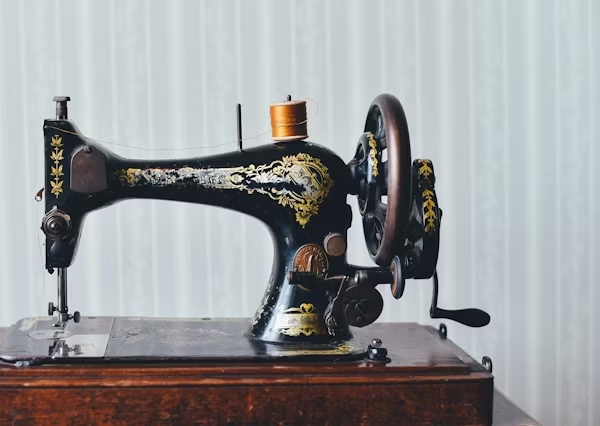The sewing machine, known in Estonian as õmblusmasin, is one of the most transformative inventions in both household life and industrial production. What began as a tool to simplify stitching has grown into a cornerstone of fashion, textile production, and even DIY culture. From the mechanical contraptions of the 19th century to today’s smart, computerized devices, the õmblusmasin embodies the intersection of craftsmanship, technology, and culture.
This article explores the history, function, and modern relevance of sewing machines, highlighting their enduring importance in both homes and industries.
The Origins and History of the Õmblusmasin
The desire to automate sewing dates back centuries, but the first functional sewing machine was credited to Barthelemy Thimonnier in 1830. His machine used a hooked needle to create a chain stitch. Despite its promise, resistance from tailors—who feared job losses—led to its destruction.
Later innovators like Elias Howe and Isaac Singer improved upon early designs, making the sewing machine more efficient, practical, and accessible. By the late 19th century, sewing machines had entered households across Europe and America, revolutionizing domestic life by drastically reducing the time required to make or repair clothing.
In Estonia and across Northern Europe, the õmblusmasin became a household staple, often passed down through generations. Brands like Singer, Pfaff, and Husqvarna became synonymous with quality and craftsmanship.
The Function of a Sewing Machine
At its core, the õmblusmasin automates the process of stitching fabric together. Key components and functions include:
-
Needle Mechanism: Moves up and down to create stitches.
-
Bobbin and Shuttle: Supplies the lower thread to interlock with the upper thread.
-
Feed Dogs: Move fabric steadily under the needle for consistent stitching.
-
Presser Foot: Holds the fabric in place while sewing.
-
Stitch Selector (modern machines): Allows users to choose from simple straight stitches to decorative patterns.
This system transforms hours of manual stitching into minutes of precise, durable sewing.
Types of Õmblusmasinad
-
Mechanical Sewing Machines
-
Operated with dials and levers.
-
Reliable and simple for basic tasks.
-
-
Electronic and Computerized Machines
-
Offer digital controls, programmable stitches, and precision settings.
-
Common in professional tailoring and fashion design.
-
-
Industrial Sewing Machines
-
Built for high-speed, continuous use.
-
Specialized for tasks like overlocking, embroidery, or heavy-duty stitching.
-
-
Portable and Mini Machines
-
Designed for small repairs and lightweight use at home.
-
Cultural and Domestic Importance
In homes, the õmblusmasin represents creativity, practicality, and self-sufficiency. It enables people to:
-
Repair clothes and extend their lifespan.
-
Design custom garments and household textiles.
-
Explore sewing as a hobby, craft, or entrepreneurial venture.
In many cultures, a sewing machine was once considered a valuable dowry item or family heirloom. It symbolized a household’s ability to sustain itself economically and creatively.
Industrial and Economic Relevance
In industries, sewing machines are indispensable. They drive the global textile and fashion economy, producing everything from fast fashion to high-end couture. Industrial õmblusmasinad are designed for:
-
Mass production: High-speed stitching of garments, upholstery, footwear, and accessories.
-
Specialization: Machines tailored for embroidery, leather, denim, or fine fabrics.
-
Efficiency and Precision: Reduced waste and standardized quality.
Without the sewing machine, modern clothing industries as we know them would not exist.
Modern Innovations in Õmblusmasinad
The 21st century has seen remarkable advances in sewing technology:
-
Computerized embroidery machines for complex designs.
-
Smart machines with touchscreen interfaces and Wi-Fi connectivity.
-
Eco-friendly machines designed for lower energy use.
-
3D sewing technology integrating automation with advanced textile engineering.
These innovations expand the role of the õmblusmasin beyond utility into art, sustainability, and digital integration.
Sustainability and the Sewing Renaissance
In recent years, the DIY sewing movement has regained popularity, driven by sustainability and slow fashion values. People use õmblusmasinad to:
-
Upcycle old clothes.
-
Create unique, long-lasting garments.
-
Resist disposable fast fashion.
Workshops, online tutorials, and sewing communities have made sewing a social and cultural revival, giving the õmblusmasin renewed importance in contemporary life.
Challenges and Declining Skills
Despite their enduring value, sewing machines face challenges:
-
Many households no longer prioritize sewing skills.
-
Cheap mass-produced clothing reduces the incentive to repair or sew garments.
-
Industrial reliance on sewing machines sometimes leads to exploitative labor practices in global textile production.
Addressing these issues requires balancing technology, ethics, and education in how we use õmblusmasinad.
Conclusion
The õmblusmasin (sewing machine) is far more than a household appliance—it is a cultural artifact, an industrial powerhouse, and a symbol of innovation. Its invention reshaped domestic life, empowered industries, and today, continues to influence sustainability and creative expression.

